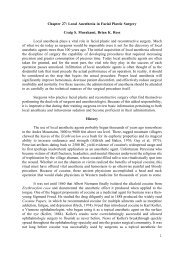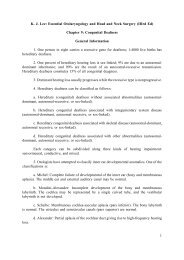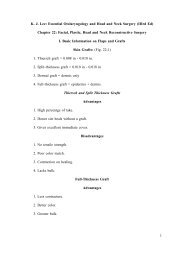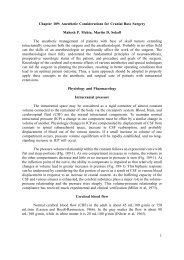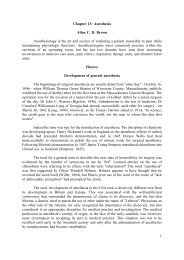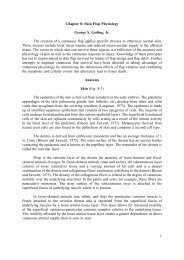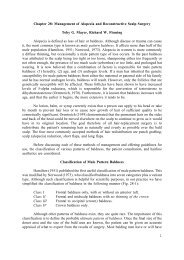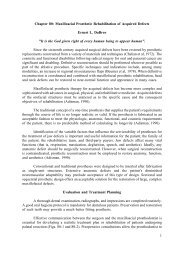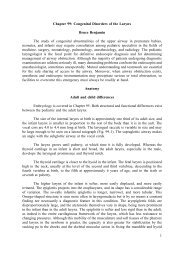You also want an ePaper? Increase the reach of your titles
YUMPU automatically turns print PDFs into web optimized ePapers that Google loves.
number of sutures should be employed to bring the tissues together. More harm may be doneby leaving large volumes of suture material in tissue with a poor blood supply.The most useful way to use subcutaneous sutures is to include the deeper layer of thedermis. This will ensure good support to the overlying skin where this is necessary. It is bestto place the sutures so that the knot is buried away from the dermis and epidermis, i.e., startthe suture away from the skin surface and end deep.Suturing the SkinIf a semi-fluid substance is bound by a flexible band, the area within the band willtend to take the form of a circle and the higher the pressure which this band exerts on theentrapped area, the stronger the circle tendency becomes, as a circle is the shortest perimeterfor a given area.Most tissues are semi-fluid substances, to a greater or lesser extent, andtherefore all suture materials will tend to form circles when used to bind these tissues. Addedto this is an important time factor, in that once the suture is tied, it is relatively inelasticaround a volume of tissue which will usually undergo some degree of swelling postsuture.The pressure within the suture will therefore rise, thus increasing forces which form circles.A further matter of great importance is that if the pressure within this bound areaexceeds the tissue perfusion pressure, either initially or later because of swelling, necrosis willresult in the tissues being thus bound. This area of necrotic tissue is a focus for infection andit can be said that the cause of so-called stitch abscesses is more iatrogenic than due toorganisms or the nature of suture materials.Avoiding this complications requires a great deal of self-discipline on the part of thesurgeon, especially as it is human to attempt to achieve better closure, improved healing andsounder apposition with greater physical input i.e., tightes sutures.If circles are to be the inevitable and most natural outcome of sutures in tissues, thenit is obvious that we should place our sutures in such a way as to form circles at the outset,thus causing minimal deformity within these tissues. With curved needles and a littlemanipulation this is a relatively easy matter.The point of entry into the skin is near to the wound edge and the needle is directedso as to take a semi-circle of tissue i.e., epidermis, dermis and some subcutaneous tissue. Itwill be found that it is best to confine the suture largely to the dermis taking relatively littleof the subcutaneous fat. It will be found that it is best to confine the sutures largely to thedermis taking relatively little of the subcutaneous fat. It is usually unwise to attempt to passthe needle through the second half of the wound in one movement, but rather to regrasp theneedle and approach the other edge of the wound as a second movement. Here again, theneedle is directed so as to form a semi-circle in the tissues coming out on the skin surfaceclose to the wound edge. When the know is tied, two semi-circles come together in arelatively tension-free circle with perfect skin apposition.10




